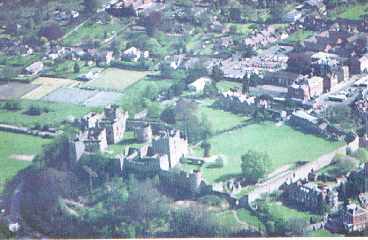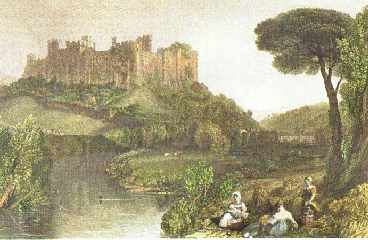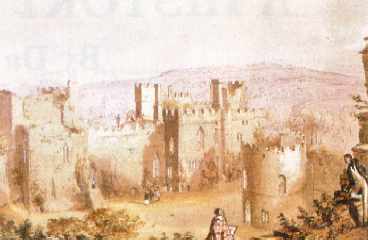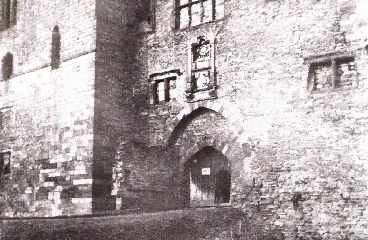Page 1.
Welcome To Ludlow Castle.
Norman
Fortress.
Ludlow Castle is first referred to by chronicler in 1138
but its date of origin is not certain. The architecture suggests that the
curtain wall of the inner bailey, its flanking tower and parts of the
gatehouse-keep date from the late 11th century. The site of Ludlow was in a
corner of the important manor of Stanton, held since 1066 by the de Lacy
family.
The level building surface and the steep slopes to the north and
west made this a fine defensive position. The rivers Teme and Corve gave
further protection. Most of the castle was built of chunky silurian limestone
quarried from its own site. It was one of a line of Norman castles along the
marches, built to pacify the countryside and hold back the unconquered
Welsh.
The de Lacy and their heirs retained the lordship until the late
13th century, but in the civil wars of King Stephen's reign it was held by
their enemy, Joce de Dinan. In 1139 Stephen himself besieged the castle and
showed great bravery by rescuing his ally young Prince Henry of Scotland, from
a grappling iron.
The de Lacys spent much of their time in Ireland, where they won great estates,
but Ludlow remained a major power base. At times it was taken into royal hands
as in 1177 and afterwards, when the Pipe Rolls record regular payments 'to the
keeper of Ludlow Castle'. Many meetings were held here, as in 1224, when Henry
111 made a treaty with the rebel prince Llewellyn, with Archbishop Langton as
mediator. |





